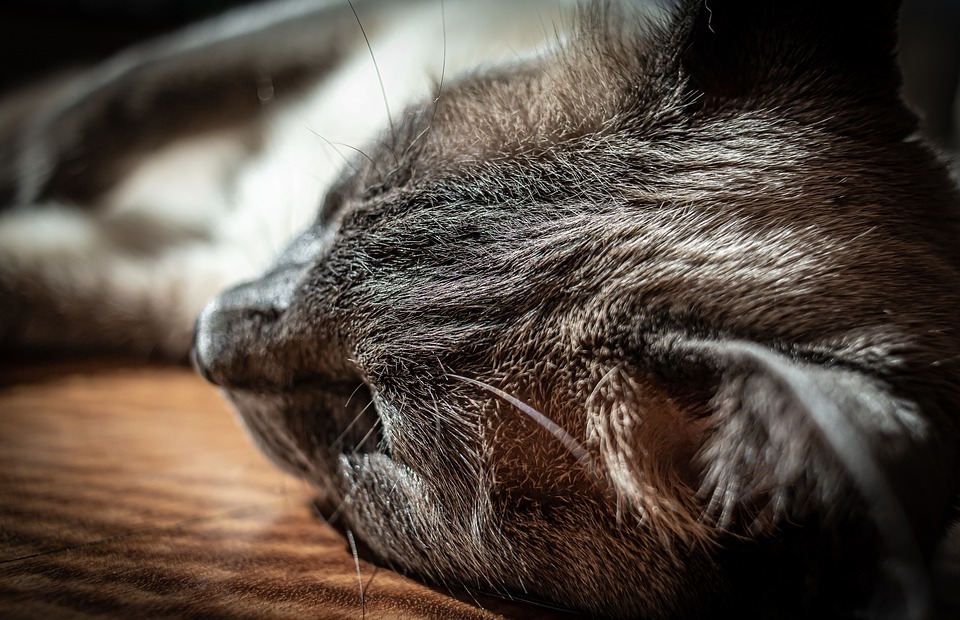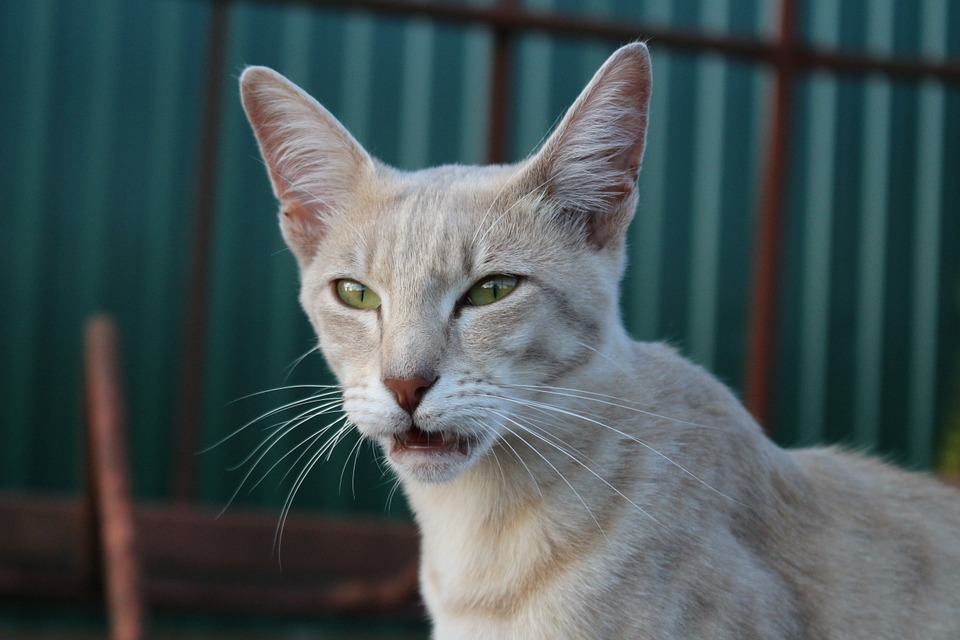Ever wondered why your feline companion seems so intent on rubbing their head and body against you? This seemingly affectionate gesture is far more than just a simple sign of love. It's a complex behaviour deeply rooted in a cat's natural instincts and intricate communication methods. This comprehensive guide will unravel the fascinating science behind why cats rub against you, exploring the motivations, the physical processes involved, and the implications for their social interactions.
Part 1: Deciphering the Feline World

1.1 Scent: The Language of Cats
Cats rely heavily on their sense of smell, possessing a highly developed olfactory system crucial for survival and social interactions. Unlike humans, cats boast a vomeronasal organ, also known as Jacobson's organ, located on the roof of their mouth. This remarkable organ allows them to detect pheromones - chemical signals that play a vital role in communication, territory marking, attracting mates, and even identifying individuals.
1.2 Scent Glands: The Cat's Olfactory Arsenal
Cats possess various scent glands strategically located across their body, releasing pheromones that convey vital information. These glands are found in several key areas, including:
- Cheeks: Cats have scent glands on their cheeks, strategically placed to rub against objects and other cats, leaving their scent as a clear mark of their presence. This behaviour is particularly pronounced when encountering unfamiliar objects or when establishing territorial boundaries.
- Sides of the Head: The area around a cat's ears and temples contains scent glands that are particularly active when they rub against a surface or person. The intensity of scent release increases during moments of excitement, anxiety, or when they are establishing a sense of ownership.
- Tail Base: The base of a cat's tail also houses scent glands, which they utilize to mark their territory and communicate with other cats. This area is particularly important for establishing dominance and conveying their mood, often through a combination of scent and visual cues.
- Feet: Though less obvious, cats have scent glands on their paws, which they use to mark objects with their scent. This behaviour is often subtle but plays a crucial role in reinforcing territorial boundaries and providing a sense of familiarity within their environment.
1.3 Scent Marking: The Cat's Way of Communicating
Cats rub against objects and people to deposit their scent, meticulously marking their territory and conveying valuable information about themselves. This behaviour serves several crucial purposes:
- Territory Marking: By rubbing against objects in their environment, cats leave their scent, establishing their presence and sending a clear message to other cats to stay away. This behaviour is particularly prevalent in multi-cat households where competition for resources can be intense.
- Social Communication: Rubbing against other cats is a sophisticated way for them to communicate their identity and social status. This can be interpreted as a greeting ritual, a display of dominance, or a way to establish a hierarchy within a group. The intensity and frequency of rubbing often reflect the cat's confidence and social standing.
- Scent Recognition: Rubbing against familiar objects or people helps cats confirm their identity and location. This behaviour is particularly important when they are exploring new surroundings, returning home after being away, or navigating a complex environment.
Part 2: Unraveling the Science Behind the Rub

2.1 The Flehmen Response: A Sensory Symphony
When a cat rubs against you, they often exhibit a curious behaviour known as the Flehmen response. This involves curling their upper lip and slightly opening their mouth, exposing a small, fleshy area called the vomeronasal organ. This specialized organ is designed to detect pheromones, which the cat takes in through the air and transmits to the olfactory bulb in their brain for analysis. This response provides valuable information about the surrounding environment, including the presence of other cats, potential mates, or even prey.
2.2 Scent Transfer: A Delicate Process
The process of scent transfer through rubbing involves a complex interplay of physical and chemical actions. When a cat rubs against you, they are essentially transferring a mixture of pheromones from their scent glands to your skin or clothing. These pheromones are oily and adhere easily to surfaces, creating a unique olfactory signature that lasts for a surprising amount of time. This scent signature serves as a silent message, conveying information about the cat's identity, mood, and social status.
2.3 Anal Gland Secretions: A More Intense Message
While less frequent, cats may also employ their anal glands as part of their scent marking behaviour. Anal gland secretions are far more pungent than other pheromones and are used to mark territory in a more intense manner. This behaviour is typically associated with anxiety, territorial aggression, or a heightened sense of territorial ownership.
Part 3: The Impact of Rubbing Behaviour
3.1 Understanding Your Cat's Social Language
Cats utilize rubbing as a primary form of communication, conveying nuanced messages about their identity, mood, and intentions. By carefully observing these signals, you can better interpret your cat's behaviour and build a deeper bond with them. Recognizing the specific context, the intensity of the rubbing, and the cat's overall body language can provide valuable insights into their emotional state and motivations.
3.2 The Influence of Scent on Cat Behaviour
The scents that cats deposit through rubbing can profoundly influence their behaviour and interactions with others. A cat's scent can trigger feelings of comfort, security, familiarity, or even aggression, depending on the context and the individuals involved. Understanding the role of scent in feline communication can help you navigate social interactions with your cat and avoid potential conflict.
3.3 Environmental Enrichment and Scent Marking
Providing opportunities for your cat to engage in scent marking behaviour can contribute significantly to their overall well-being. This can be achieved by providing scratching posts, catnip toys, and other objects that they can rub against. By allowing them to leave their scent, you are acknowledging their natural instincts and promoting their emotional health.
Part 4: Decoding the Cat's Rubbing Motives
4.1 The "Love Rub": A Sign of Affection
Perhaps the most common reason cats rub against you is simply to show affection. When a cat rubs against you, they are essentially marking you as part of their "family" and showing you that they trust and care about you. This behaviour is often accompanied by other signs of affection, such as purring, head bunting, and slow blinking.
4.2 Seeking Attention: A Call for Interaction
Rubbing against you can also be a subtle way for your cat to seek your attention. If your cat is rubbing against you, they may be trying to tell you that they want to play, be petted, or simply have some quality time with you. Pay attention to other cues, such as meowing, rubbing against your legs, or bringing you toys, to understand their specific needs.
4.3 Marking You as Their Property: A Territorial Act
Cats are territorial animals and they may rub against you to mark you as their "property." This behaviour is particularly common in multi-cat households, where cats may rub against you to establish dominance over other cats.
4.4 Comfort and Security: A Source of Reassurance
When cats are feeling stressed or anxious, they may rub against you to seek comfort and security. The familiar scent of their owner can provide a sense of calm and reassurance, helping them navigate challenging situations.
4.5 Communication: Expressing Their Mood
Cats may rub against you to convey their mood, whether it's happiness, anxiety, or simply a need for attention.
Part 5: FAQs
5.1 Why does my cat rub against my legs?
Cats often rub against your legs because they are a convenient height for them to reach and provide a good surface for scent transfer. They may also be seeking your attention, reassuring themselves of your presence, or marking you as part of their territory.
5.2 What does it mean when a cat rubs its head on you?
When a cat rubs its head on you, it's a powerful sign of affection and trust. They are depositing their scent on you, marking you as part of their "family" and strengthening the bond between you.
5.3 Can I stop my cat from rubbing against me?
While it's not recommended to completely discourage your cat from rubbing against you, you can redirect their behaviour by providing them with alternative objects to rub against, such as scratching posts or catnip toys.
5.4 Why does my cat rub against my furniture?
Cats rub against furniture to mark their territory and establish their presence within their environment. This behaviour is particularly common in multi-cat households, where competition for resources and space can be intense.
5.5 Is it normal for my cat to rub against strangers?
While some cats are more social than others, most cats will rub against strangers as a way of introducing themselves and establishing their presence. This behaviour is often accompanied by a slow blink, a sign of trust and acceptance.
5.6 Is it harmful to rub against my cat?
It is perfectly safe to rub against your cat. In fact, most cats enjoy being rubbed and will respond with purring, head bunting, and other affectionate behaviours.
5.7 What should I do if my cat is rubbing against me too much?
If your cat is rubbing against you excessively, it may be a sign of anxiety or stress. Consider providing them with more opportunities for scent marking behaviour, such as scratching posts and catnip toys, to help them feel more secure and comfortable.
5.8 Why does my cat rub against me before eating?
Some cats rub against their owners before eating, as a way of reassuring themselves that their environment is safe and that they are in a familiar, comfortable setting.
5.9 How can I encourage my cat to rub against me more?
To encourage your cat to rub against you more, try offering them treats or engaging in positive reinforcement by petting them and giving them verbal praise when they rub against you.
This guide provides a comprehensive understanding of the fascinating science behind why cats rub against you, offering valuable insights into their communication methods and social behaviours. By appreciating the complexity of feline communication, we can build stronger bonds with our feline companions and create harmonious relationships based on mutual understanding and respect.
Everyone is watching

Are Cat Ribs Flexible? Understanding Their Anatomy
CATS & KITTENSThis article delves into the fascinating world of feline anatomy, exploring the flexibility of cat ribs and ho...

Can Cats Eat Bananas? (Everything You Need to Know)
CATS & KITTENSThis article dives into the intriguing question of whether cats can safely enjoy the sweet, yellow fruit, bana...

Cat Lifespan: How Long Do Cats Live?
CATS & KITTENSThis comprehensive guide explores the factors influencing the lifespan of our feline companions, providing ins...

Can Cats Get COVID-19? What You Need to Know
CATS & KITTENSThis article will delve into the fascinating world of feline COVID-19 susceptibility. We'll explore whether ca...

Can Cats Eat Eggs? A Complete Guide to Egg Safety for Your Feline Friend
CATS & KITTENSWhen it comes to treating our furry companions, we all want to ensure we're doing what's best for them. Eggs...
